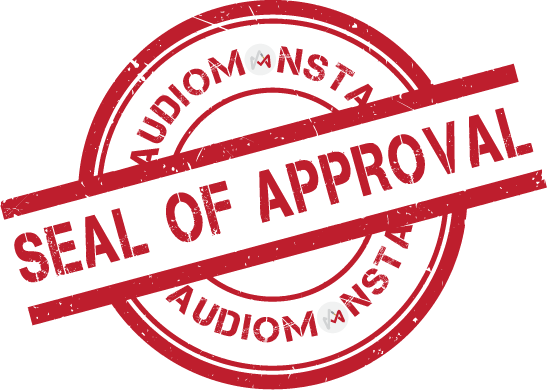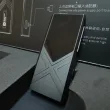Introduction
CCA the KZ-sub brand… who still doesn’t recognize them? Probably the greatest contributor of the rise of Chi-Fi IEM market, they have just recently released a budget single dynamic driver IEM, CCA CRA. Using a newly developed ultra-thin 3.8µm polymer membrane for its driver, CCA CRA promises an ultra-high frequency details, deep bass, and “shocking soundstage” in their marketing advertisement. Well then let’s check it out shall we.
Packaging & Accessories
Nothing special and too simple for a budget-oriented IEM packaging. Basically, you get a small box with 3 pairs of eartips, a cable, and manual. A pouch or a case to store the IEM would’ve been great in my opinion. In terms of build design, this black version CCA CRA has quite a nice-looking metal-resin combination faceplate as well as a transparent shell. The size is fairly small-medium and has good comfort level. The stock OFC cable is also okay and doesn’t feel to be easily tangled.

Specifications
- Impedance: 34Ω
- Sensitivity: 105dB
- Frequency: 20 – 40 kHz
- Plug type: 3.5mm
- Pin type: 2-pin 0.75mm
- Cable type: Oxygen free copper (OFC)
- Cable length: 125 ± 5cm
Retail Price & Where to Get
This unit is a review unit sent by KZ Official Store. The CCA CRA can be purchased currently for RM60 through KZ Official Store.
Purchase link : https://www.kztws.com/products/cca-cra
Get discount by using this discount code
Discount code : DRCRA

Source Pairing
Windows 10 Laptop > Realtek HD Audio 3.5mm output > CCA CRA
Sony NW-ZX300 (Walkman One WM1Z) / Fiio Q5 (AM3D) / DDHifi TC35B (2021) > CCA CRA
Test Tracks
Tone and Presentation
The CRA has the classic fun-energetic V-shaped signature but this time with surprisingly good extension on both ends of the spectrum. The star of the show is the treble performance which I believed is due to the use of newly developed ultra-thin diaphragm in the CRA.
Bass
As mentioned above, the CRA has a very good sub-bass extension which can go very low, it also helps the bass details and texture to come alive. Mid-bass has an obvious boost, it is strong, solid, and most importantly not too forward until it feels bloated. Along with its above average speed, the bass of the CRA is fast, punchy, and very well done for a V-shaped IEM. I was quite in awe sometimes when the CRA’s bass was able to handle some heavy metal tracks as well. But of course, don’t expect the performance like in the higher tier IEMs.
Midrange
Midrange is not the strongest attribute in the CRA. Starting from the lower-mids, the lower-mids are recessed however, the effect is not very noticeable because the upper-bass is quite strong and this consequently masking the backward position of some instruments and male vocal in particular. Even more so when the upper-mids are relatively forward than the lower-mids. Whether it is due to the driver or tuning, the CRA is definitely has a great sense of clarity despite the slight recession in the upper-mids. Therefore, vocal sounds great without any peaky-ness and also felt euphonic due to the existence of “air”. Technically speaking, the CRA mids are just okay and probably its weakest side.
Treble
The treble of the CRA reminds me of the cult favorite HZSOUND Heart Mirror. The tuning in this region of both IEMs is very similar, there are few peaks and emphasis across the high regions. To be pessimistic, the tuning in reality is not so accurate and has flaws. It is grainy, almost sibilant prone, and fatiguing over the time. In another standpoint of view, the brightness can give the sensation of crispiness especially in cymbals and hi-hats which is extremely satisfying for a lot of treble-heads. What truly great is the “air” or upper-treble extension presence in the tuning that indirectly influences the timbre, soundstage, and vocal performance of the CRA.

Soundstage & Imaging
Soundstage and imaging honestly are just average reflecting its $15 price tag. Coming from more competent higher price IEM, CRA may sound flatter or 2-dimensional in its soundstage. But you do get acceptable quite nice instrument imaging for the price which will be good enough for most music to be enjoyed.
Separation & Timbre
In terms of separation, this is where sometimes I got surprised. The driver’s resolution is very good and capable enough in order to portray those layers and details in the recording like some mediocre $35 IEM can do. What I think is going on here is probably due to the good extension in the sub-bass and the “air” presence throughout the whole sound. Nonetheless, the CRA separation and transient capability fall short in complex tracks like how I expected. Timbre is average, nothing to be praised but nothing to be complaint either. Enjoyable enough.
Drivability & Synergy
CRA is not a hard to drive IEM, it didn’t need an extensive amplification at all. Since the driver is quite competent, better source such as DDHifi TC35B, Fiio Q5, and Sony ZX300 are able to increase the bass slams, detail retrieval, and dynamic range of the CRA.

Comparison
KZ EDX Pro:
CCA counterpart KZ also had recently release EDX Pro which is the upgraded version of the previously EDX. The EDX Pro is priced at $10 cheaper than CRA and it also equipped with a single dynamic driver. EDX Pro is a stronger V-shaped IEM and in my humble opinion is basically a slightly worse tuning CCA CRA due to less extended upper-treble and more forward upper-mids-highs in which sibilance property can be induced more than the CRA. Sub-bass has similar presence as the CRA however the stronger mid-bass can sometimes interfere with the sub-bass clarity. There is also stronger mid-bass bleed into the midrange, and due to this I think the EDX Pro might suit bassheads. In terms of technicalities, both perform at similar level except that the CRA sound a hint more technical due to its better tuning and clarity.

KZ ZEX Pro:
Tuned by “crinacle” of In-Ear Fidelity, ZEX Pro is a budget triple hybrid driver (Magnetostatic + BA + DD) IEM. Right of the bat ZEX Pro is much more neutral and cleaner in the tone. The tonality that I hear is mostly balanced or U-shaped perhaps, however coming from the CRA, ZEX Pro may sound thinner or drier since the CRA has better slams and body to its overall sound. Although CRA has more recessed midrange which reflect the better and more forward vocal projection by the ZEX Pro, bass and treble extension on the contrary are far better on the CRA. ZEX Pro has also greater sibilance and harsher treble. Timbre is also slightly more natural on the CRA as it uses a single DD compared to the hybrid driver configuration of the ZEX Pro. This also includes a better coherency with the CRA. Technical performance-wise is not much different between these two except that ZEX Pro has just a hair wider soundstage-imaging capability and resolution. Based on my arguments above, I don’t think it makes sense for people to choose the ZEX Pro over the CRA since the former should perform much better as the price tag suggested. Or is the CRA is the one that perform too greatly?
KZ ZEX:
The original ZEX is tuned by KZ themselves and it possesses one less driver in which the BA driver is not used in comparison to the ZEX Pro. Comparing it to the CRA, the ZEX has a warmer V-shaped tonality. Based on my hearing, the ZEX tuning is pretty much bad to my ears, it is bloated masking the midrange and treble as well as having pretty much mediocre technical performance. CRA on the other hand is easily the champion here with much better extensions on both ends and with more natural timbre. The CRA even has faster transient speed especially in busy passages of a track. To be fair, the ZEX Pro is a better IEM than the ZEX and so, it is logical that CRA is just a better IEM than the ZEX.
KZ ZSN Pro:
How about the old school ZSN Pro? Well, no comparison here, CCA CRA is confidently an upgrade to the ZSN Pro not just in terms of technicalities but also tonal balance. Coming from the CRA, ZSN Pro is just an average level KZ classic V-shaped IEM. Soundstage is much grander; driver is much more resolving and faster; “air” and sub-bass are much more present; and timbre is far from artificial in comparison to the ZSN Pro.

Reecho SG-01:
Reecho SG-01 is a much pricier 1 DD IEM. It boasts a 10mm graphene-based diaphragm. The sound is warm V-shaped, and the resolution and technical performance are quite good. Relative to the CCA CRA, the SG-01 has warmer, richer, and fuller presentation. CRA is more aggressive and energetic sounding IEM in comparison to the smoother and laid-back sound SG-01. Impressively, CCA CRA is still no slouch in the extension on both ends but resolution power and technicalities are just better on the Reecho. Soundstage is more 3D, imaging placement is more accurate, instrument separation, and macro/micro-contrast are also ahead with the SG-01. However, CRA has a hint more natural timbre and better controlled sibilance in the lower-treble.
For Who?
Tight on budget? For $15, CCA CRA is just too good not to be recommended as long as you don’t mind the good old V-shaped sound signature. It is an IEM that suit all kind of music ranging from pop and rock to acoustic and classical with very affordable asking price.
Conclusion
Honestly, every time I heard people raving about KZ and CCA, I am skeptical and have never felt any excitement and curiosity to try them. But thank the God this time, the CCA CRA somehow just got landed on my hand and I was nothing but impressed even if it has a V-shaped sound signature. It is by no means a giant killer or whatsoever, but this IEM is definitely will be my current benchmark for $15 single dynamic driver IEM. Long live the Chi-Fi.













